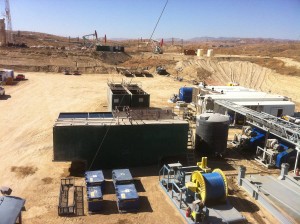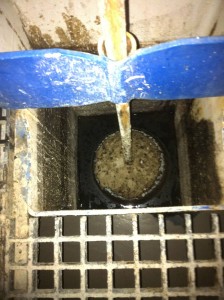In this earlier post we talked about scaling, which can cause salts to drop out of the completion fluid and the resulting loss of well control weight in a high temperature workover situation. Drilling muds can also lose weight unexpectedly when solids come out of solution in the mud.
BARITE LOSS FROM CENTRIFUGE
The centrifuge is supposed to assist the shaker in removing smaller cuttings and oil from the mud returns. This normally keeps the mud at the proper weight and prevents well control problems from happening. The problem is when the centrifuge actually succeeds in removing barite from the mud. This will cause the mud weight to decrease and the downhole pressure to decrease.
DILUTION
When more fresh base fluid (usually fresh water) is added to the mud, this increases the total volume of fluid without also adding weighting materials. Not surprisingly, this can cause a sharp decrease in mud weight for the mud exiting the centrifuge. Over time, this will slowly lighten the entire mud system if the weight is not checked routinely.
HIGH TEMPERATURE
When drilling fluids get hot, they break down more quickly. This can be a problem with some barite being pulled out. What is worse is that the viscosity of mud fails as it breaks down and can no longer lift cuttings. High temperature mud when it reaches the surface can also damage the well control equipment, so measures should be taken to control the increased heat.
SETTLING OF SOLIDS
While solids and cuttings are traveling up the hole, they are carried and suspended by the mud. In turn, with all of the force the mud exerts on the solids to lift them, the solids exert a force back downward on the mud as an increased pressure. If circulation stops, then these solids will settle out and this lifting force on the cuttings disappears. Consequently, bottomhole pressure will drop with an instant decrease in equivalent mud weight.


